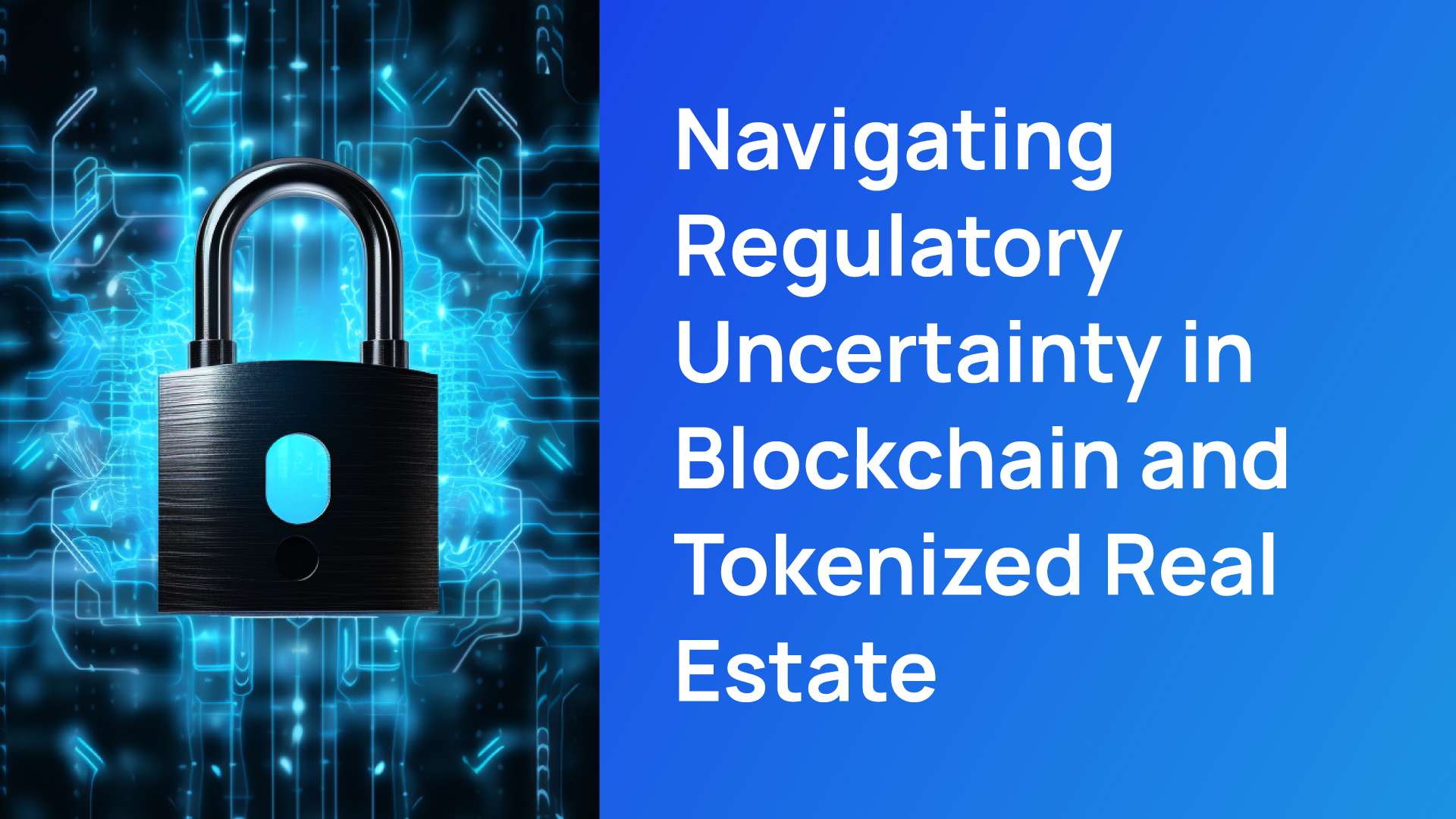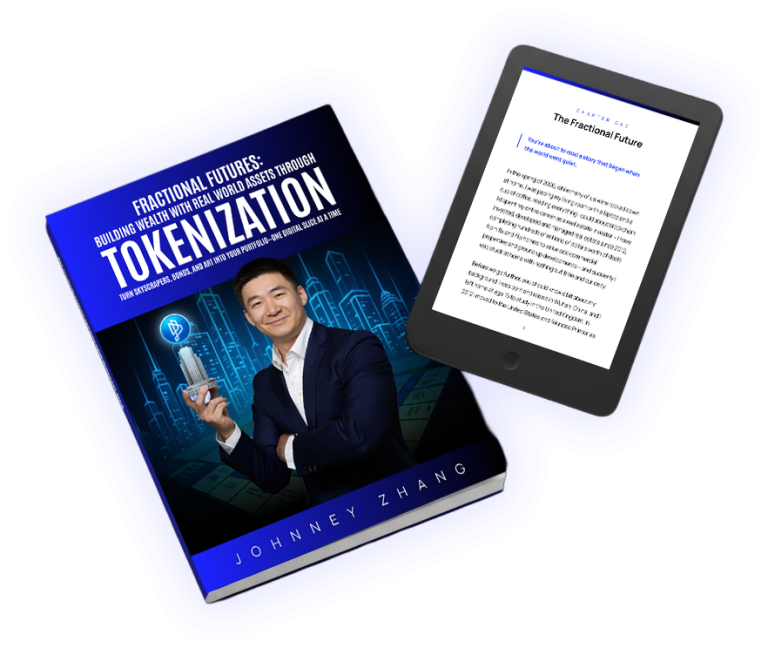Characterized by its decentralized architecture, blockchain operates without a central authority, a feature that presents both advantages and challenges. This is particularly evident in the emerging sector of tokenized real estate, which is redefining the paradigms of property investment.
At this pivotal juncture, the speed of technological innovation is outstripping the pace of regulatory clarity. This misalignment has far-reaching implications, affecting not just investors and innovators but the broader fabric of society.
Recent developments, such as Bitcoin ETF applications and landmark legal cases like SEC v. Ripple, indicate that the regulatory landscape is anything but static. But let’s face it: the path to blockchain and tokenized real estate is like navigating a labyrinth, especially when it comes to regulation. Regulatory clarity isn’t just a legal hoop to jump through; it’s the cornerstone of market development and investor trust. Without it, growth is stunted, and investment is deterred. With it, the sky’s the limit.
This article serves as an in-depth guide, shedding light on the current regulatory challenges facing the industry, highlighting the progress achieved so far, and exploring potential solutions on the horizon.
Regulatory Uncertainty in Blockchain
The Essence of Decentralization in Crypto
Decentralization is the cornerstone upon which the edifice of blockchain is built. It’s a system where control is distributed among multiple nodes or participants rather than being concentrated in a single entity. Imagine a vast, interconnected web where each strand has equal significance, and you’ll begin to grasp the essence of decentralization. But here’s the rub: this very principle of decentralization creates a conundrum when it comes to regulation. This raises the question: How can existing regulations be enforced in a system designed to operate outside the reach of traditional centralized entities?
If history has taught us anything, it’s that groundbreaking innovations often pave the way for new regulations. Consider the automobile industry. The invention of cars led to a host of regulations, from speed limits to emission standards. Similarly, the internet’s advent brought about data protection laws like GDPR. Blockchain and cryptocurrencies are currently in a similar ‘wild west’ phase, where the lack of clear regulations is both an opportunity for pioneers and a challenge for policymakers.
Current Regulatory Landscape: A Work in Progress
Unlike traditional financial systems, which have centralized institutions like banks and regulatory bodies, blockchain operates on a peer-to-peer network. This makes it difficult to apply existing regulatory frameworks effectively. Imagine trying to catch smoke with your hands; that’s how elusive regulating a decentralized system can be.
However, there’s a silver lining. The gaps in the regulatory framework are becoming increasingly clear, and significant progress is being made to address them. The challenge now lies in finding a middle ground where regulators and the industry can collaboratively foster both innovation and compliance. Striking this balance is not just a regulatory necessity but also a critical factor in preserving the advantages of a decentralized ecosystem.
Varied Approaches Across Jurisdictions
When it comes to blockchain regulation, one size definitely does not fit all. Different countries have adopted varied approaches, reflecting their unique economic, political, and cultural contexts. For instance, the United States has been relatively cautious, focusing on consumer protection and fraud prevention. Switzerland, on the other hand, has emerged as a blockchain-friendly jurisdiction, with frameworks that facilitate crypto-based financial activities.
The European Union is working on comprehensive legislation to govern digital assets and blockchain technology. Asian countries like Korea and China have also taken significant steps, albeit in different directions: Korea is generally supportive of blockchain innovation, while China has imposed strict restrictions on cryptocurrencies but is leading in the development of a state-backed digital currency. El Salvador has taken the most radical approach by adopting Bitcoin as legal tender, a move that has been met with both enthusiasm and skepticism
Facing heightened scrutiny from U.S. regulators, Coinbase, a leading cryptocurrency exchange, has contemplated relocating its operations offshore. This decision highlights the urgent need for jurisdictions to adapt their regulatory frameworks to accommodate transformative technologies like blockchain. Failure to do so risks stifling innovation and losing key industry players.
Challenges of Regulatory Uncertainty
Investment Deterrence
Certainly, the absence of well-defined regulatory frameworks in any industry can be a significant deterrent for potential investors. This uncertainty can lead to sudden policy shifts, causing financial setbacks. A prime example is China’s abrupt ban on Initial Coin Offerings (ICOs) in 2017, which triggered a market downturn and impacted both retail and institutional investors. Such unpredictability hampers the growth of groundbreaking blockchain initiatives, especially in sectors like tokenized real estate that require considerable upfront investment.
Compliance Complexities
For blockchain companies, the absence of a well-defined regulatory framework often translates into a convoluted compliance landscape. Companies must navigate a patchwork of laws that are often contradictory or open to interpretation. For example, in the United States, different agencies like the SEC, CFTC, and FinCEN each have their own set of rules concerning digital assets. This creates an environment where companies spend more resources on legal compliance than on innovation.
According to the 2023 Cost of Compliance Report by Thomson Reuters, the volume of regulatory change is expected to increase, posing key challenges for compliance officers. The report also highlights that the cost of compliance staff is expected to rise, further exacerbating the resource allocation issue. This underscores the urgent need for a more streamlined and coherent regulatory approach to foster innovation while ensuring compliance.
Market Fragmentation
The divergent regulatory approaches across different jurisdictions exacerbate market fragmentation. A blockchain company that is compliant in Switzerland may find itself at odds with regulations in the United States or China. This fragmentation is particularly problematic for tokenized assets like real estate, which inherently require a global market for liquidity. The lack of regulatory harmony leads to ‘regulatory arbitrage,’ where companies set up operations in jurisdictions with favorable regulations, often at the expense of consumer protection and market integrity.
By addressing these issues head-on, there is an opportunity to foster an environment that is conducive to innovation while safeguarding the interests of investors and the broader financial market. It is important to remember however that regulation limits who can access the technology, but not what the technology can do.
Potential Pathways to Regulatory Clarity
Collaboration Between Regulators and Industry
The first step toward regulatory clarity is fostering a collaborative dialogue between regulators and industry stakeholders. This dialogue can take various forms, such as public consultations, advisory boards, or even regulatory sandboxes where companies can test their technologies under a provisional set of rules.
In July 2023, the Financial Innovation and Technology for the 21st Century Act (FIT Act) in the United States marked a significant milestone for the digital assets industry. The FIT Act, which received bipartisan support, aims to establish an appropriate regulatory framework for the industry, with a strong emphasis on the need for collaboration between policymakers and industry stakeholders. As the article from CoinDesk points out, this legislation marks the first time crypto-focused regulatory bills have been voted out of any committee in the House or Senate. Such initiatives can serve as a blueprint for blockchain regulation, particularly in the realm of tokenized real estate.
International Harmonization
Given the global nature of blockchain technology, international harmonization of regulations is imperative. Efforts are already underway through organizations like the Financial Action Task Force (FATF) and the International Organization of Securities Commissions (IOSCO) to create international standards for digital assets.
When it comes to international harmonization in the tokenized real estate industry, challenges like capital control and taxation loom large. However, the EU’s upcoming MiCA regulation and initiatives like the Tokenized Asset Portability Initiative aim to standardize these assets, signaling a move towards global regulatory alignment and setting the stage for broader adoption in line with other digital assets.
Future Prospects
The Evolving Regulatory Landscape
When navigating the complexities of blockchain regulation, two primary approaches emerge: retrofitting new technologies into existing regulatory frameworks and identifying regulatory gaps to create new, tailored guidelines. The former often leads to a patchwork of regulations that may not fully address the unique characteristics of blockchain. For instance, applying traditional securities laws to tokenized assets can be akin to fitting a square peg into a round hole. The latter approach, however, offers the flexibility to craft regulations that are more attuned to the nuances of blockchain technology.
In July 2023, the Financial Accounting Standards Board (FASB) recently finalized new accounting standards for certain crypto assets like Bitcoin. This change will go into effect for fiscal years beginning after December 15, 2024. The new rules will require companies to report qualifying crypto assets using the fair value accounting method, a significant shift from the current practice where most companies report it as an intangible asset. This move by FASB is a prime example of regulatory bodies adapting to fast-changing financial technologies, and it could serve as a model for future regulations in the realm of tokenized real estate.
Rethinking the Role of Regulatory Agencies
As society ventures deeper into the blockchain era, traditional regulatory paradigms are being upended. Regulatory agencies are transitioning from mere rule enforcers to innovation facilitators. This shift necessitates agile regulatory approaches, potentially leveraging machine-readable rules and smart contracts for automated compliance.
For instance, Estonia’s groundbreaking initiative in digital governance serves as a compelling example. The country has embarked on an ambitious project known as e-Estonia, a coordinated governmental effort to digitize all aspects of society—from healthcare and education to taxes and voting. This not only enhances efficiency but also transforms the role of regulatory bodies from gatekeepers to facilitators, setting a precedent for how agencies can adapt in the age of blockchain.
The Way Forward
The blockchain landscape is fraught with regulatory uncertainties, but it also presents unprecedented opportunities for innovation and growth. The key to unlocking this potential lies in a collaborative approach to regulation, involving all stakeholders—regulators, industry players, and investors.
By fostering an environment of mutual understanding and respect, we can pave the way for a more stable, transparent, and thriving market. And let’s not forget, at the heart of all this technological advancement and regulatory discourse is the ultimate goal: to create a system that is not just efficient and profitable, but also equitable and trustworthy.















